
Today’s eastward cycling began where yesterday’s left off: in a small lay-by on the moors above Hathersage. There is a very successful herd of red deer that live up here, within sight of Sheffield; but I didn’t see any of them this morning. It was an overcast, breezy start to the day – quite different from the clear, bright evening the night before. Importantly, however, it was dry. Not the road surface, which bore the hallmarks of last night’s rain; but the weather itself all morning, and most of the afternoon, too, as it turned out. Which was a blessing because I had well over 100 miles to ride to the coast at Skegness, and a train to catch back at 6.15pm!
The first half of my ride today was effectively a re-enactment of many rides to Cleethorpes over the years, at least as far as Lincoln. The hardest part of these rides was always the first 3 miles up the long hill out of Hathersage, which I did on my actual way to Cleethorpes just a few days ago. But today, I happily had a lift over this unnecessary extra obstacle and began my eastward journey from the more lofty point I rode to last night. No point in putting myself through that again. So I didn’t. So there. From here onwards I think my bike almost knew its own way to the Old School Tea Rooms at Carburton, south of Worksop, for my traditional breakfast stop, 30 miles in. I was riding my Rose today, a much lighter road bike on thin tyres. It is the same red bike I used in Shetland and Orkney and I had no luggage to speak of, so it made sense. It also gave my Sonder Calibri a final chance for a tweak in the workshop at Alpkit in Hathersage, before it is called into a month of serious action. I must call out Alpkit for their excellent customer service, and for keeping me and their bike running smoothly for 122 maps (and many more to come). So a very big thank you to all in Edinburgh and Hathersage who have been so kind and responsive. I am truly putting your bike through a thorough test, and so far it has stood up really well. As an aside, it is also agreed by everyone I speak to that it is a nice colour (reef blue, if you are interested)! Hats off all round.
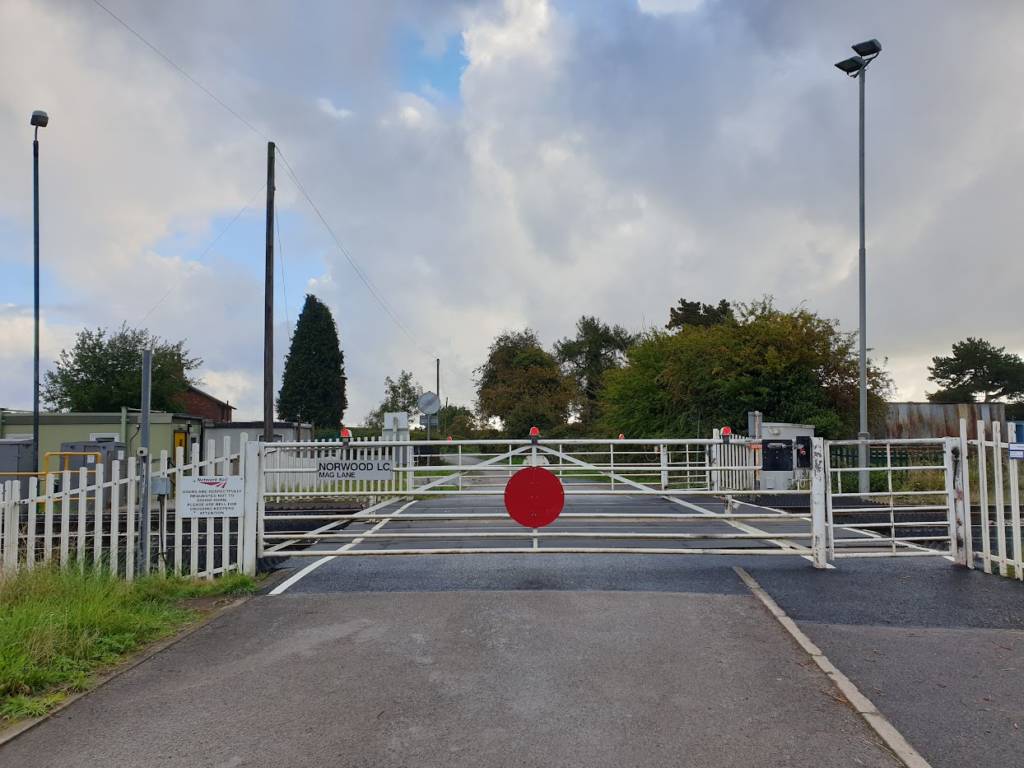
There isn’t too much to say about the journey to Carburton. I did get to go over a level crossing with gates, which was an unusual moment of nostalgia. And the final few miles took me along one of the more lovely roads in North Nottinghamshire, following the valley of the tiny River Poulter, which passes through the huge Welbeck Estate, home of the Duke of Portland, as well as the adjacent Clumber Park. It has been dammed several times to create a pretty series of lakes, popular with wildfowl and fishermen. This area of Nottinghamshire is known as The Dukeries, because of its four large ducal estates, out of less than 20 in the whole country. They are (or were): Welbeck Abbey (Duke of Portland); Clumber (Duke of Newcastle – now owned by the National Trust), Worksop Manor (Duke of Norfolk) and Thorseby Hall (Duke of Kingston – and now a luxury hotel). The surrounding area is peppered with unusual looking lodge houses at various road junctions and entrances, as well as the occasional estate village, usually with stables and a clock tower.
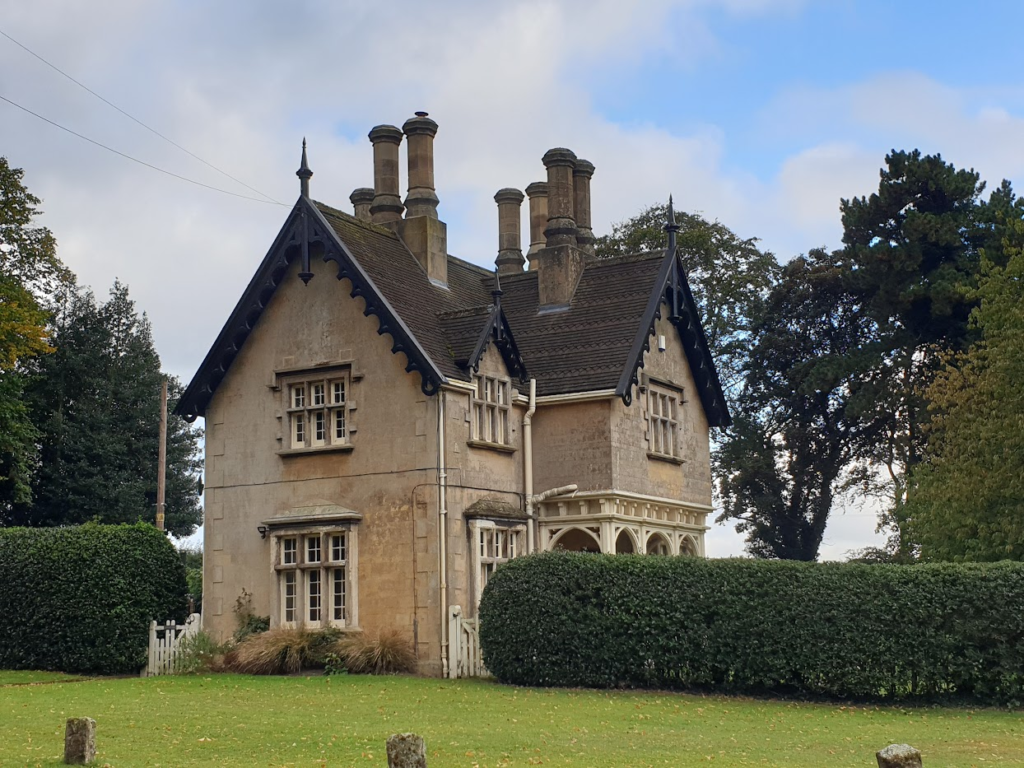
I grew up just north of here and have spent a lot of time at Clumber Park over the years. It was a good place to hold June birthday parties, play cricket or football on the open green spaces, climb trees, and go for family walks around the lake. Many happy memories. My Nan has a tree planted here in her memory, part of the impressive Lime Tree Avenue that is Europe’s longest. Planted in 1840, it is 2 miles long with 1,296 common limes. Her’s is the little one near the turning for the main visitor car park, if you want to see it.

Part two of today’s ride was from Clumber Park to Lincoln. This is very pleasant in an unremarkable way, because it can be done in a virtually traffic-free way. The start of the ride, through the heathland of Clumber Park, is a delight, and as you cross the old stone bridge – now restored after vehicle damage and closed to cars – you get a fine view of the Gothic Clumber Chapel over the lake. After that I made my way across lanes through the odd red brick rural village, like Bothamsall and Normanton-on-Trent, to cross the River Trent and follow the old Lincoln to Chesterfield rail trail right into the heart of Lincoln. On this occasion I favoured roads until the old station at the village of Harby (still, weirdly, in Nottinghamshire despite being on the east side of the river), because I have previous with this section of unsurfaced cycle track. I also wanted to be able to mention Queen Eleanor of Castile. On 28th November 1290, she died here in Harby. She was the Queen consort of King Edward 1st. They married in 1254 when he was 15 and she was 10. They had at least 15 children over that 36-year period, which is going some by any standards. After her death, she was taken the short distance to Lincoln, where her body was eviscerated and embalmed for the journey to London and her funeral. The grief-stricken King marked each of the 12 sites where the funeral cortège paused overnight with an elaborate stone cross. Most of them were destroyed in the English Civil War; but 3 survive at Geddington, Hardingstone and Waltham. Perhaps I will be able to work one or more into my adventure. Who knows. In Harby village, Eleanor is commemorated in the name of the primary school, and on the village signs, and in a carving on the church tower.

I arrived in Lincoln in time for lunch and grabbed some food by Brayford Pool, where the Roman Foss Dyke canal from the River Trent meets the River Witham. It now has the new university on its south side. Facing it across the water is the typical collection of hotels and restaurants that a modern British urban waterside development contains. You know, Nando’s, Harvester, Wagamamas, Wetherspoons. All very popular, not so original. But it gets the cyclist fed.
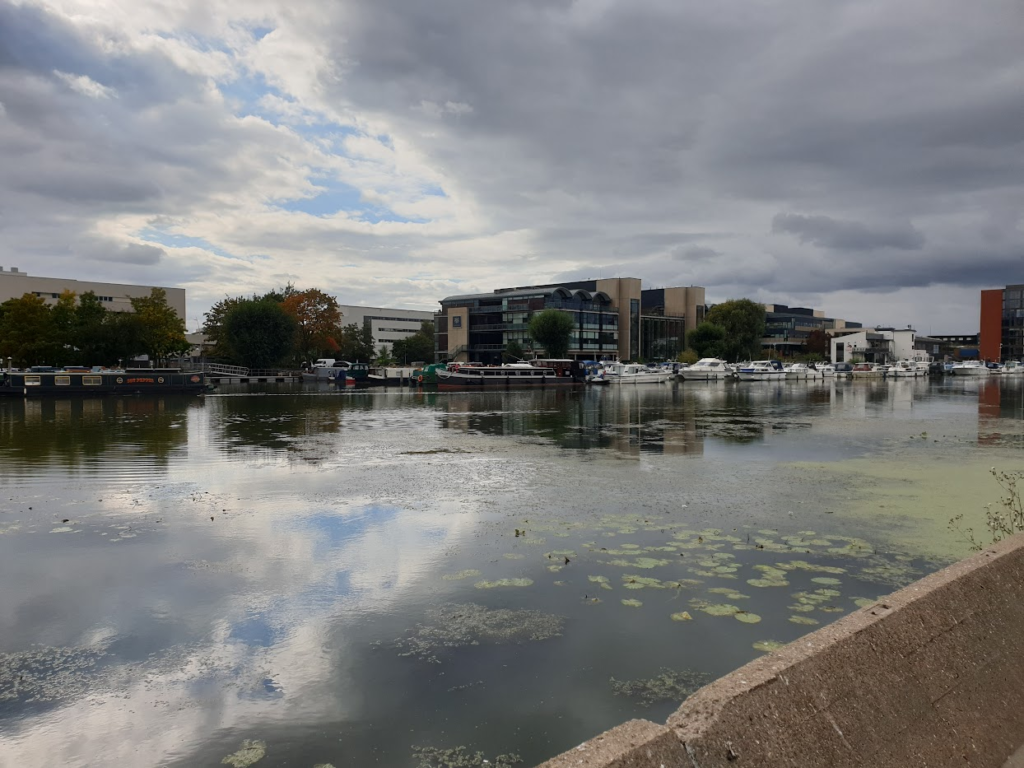
But the crowning glory of Lincoln, visible from many miles away on its hill, is the cathedral. It is unmissable and draws the eye from every angle. It is the queen of cathedrals, with its 3 tall and highly decorated towers of locally quarried stone glowing when it catches the sun. I love it and never tire of it. Once upon a time, each of the towers was crowned by a tall spire. For 238 years, from 1311 until the central spire collapsed in a storm in 1549, it was at 525 feet (or 160m) the world’s tallest building, superseding the Great Pyramid of Giza. Imagine that.

Today it isn’t even Lincolnshire’s tallest building (that accolade going to Grimsby Dock Tower); but it is still a true wonder to behold. It also housed one of only 4 original copies of Magna Carta (now kept in nearby Lincoln Castle). There was no time to cycle from the ancient Stonebow archway up the aptly named and cobbled Steep Hill today to see these treasures at close hand; but I have been before many times and will go again, so I didn’t mind.
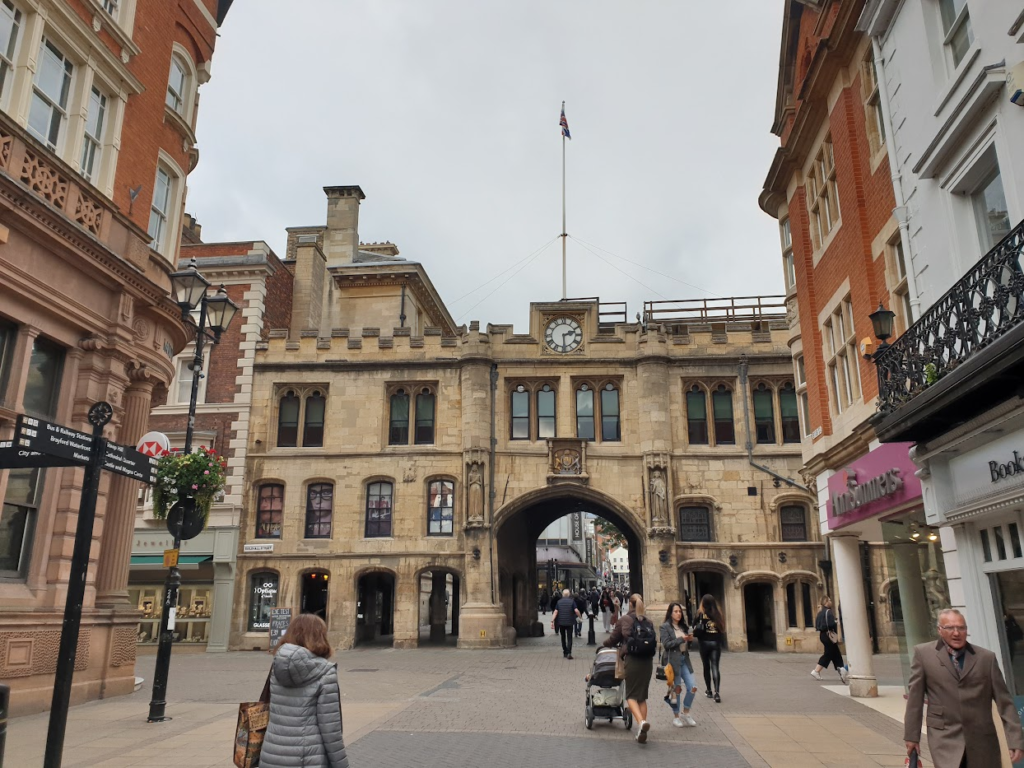
As I often do, I left the centre of Lincoln along the banks of the River Witham and was very soon out in the country again, following another railway turned cycle path. This can be followed all the way to Boston if you are heading that way. I stayed on it for the first 9 miles until you are temporarily forced off at the village of Bardney by the presence of a large sugar factory. That is when it chose to rain. Not for long, but quite hard. I found shelter outside a pub and then pushed on along empty rain washed roads to the inland resort of Woodhall Spa. As the name suggests, this was once a place where people came to take the waters. Today it still has some very large hotels, and a unique cinema in the woods with an organ that rises up in front of the screen to be played during the interval. It is also home to a large open air heated swimming pool, something of a rarity in England, as well as being the home of amateur golf in England with two highly rated courses. For me, today, it was a chance to quickly fuel up with a latte and a very large slab of Battenberg cake. Needs must. From here I would deviate away from any previous route to Cleethorpes and its convenient rail service home, and instead confront two hours of hard riding to make it to Skegness on time for the much lengthier train journey home via Nottingham.
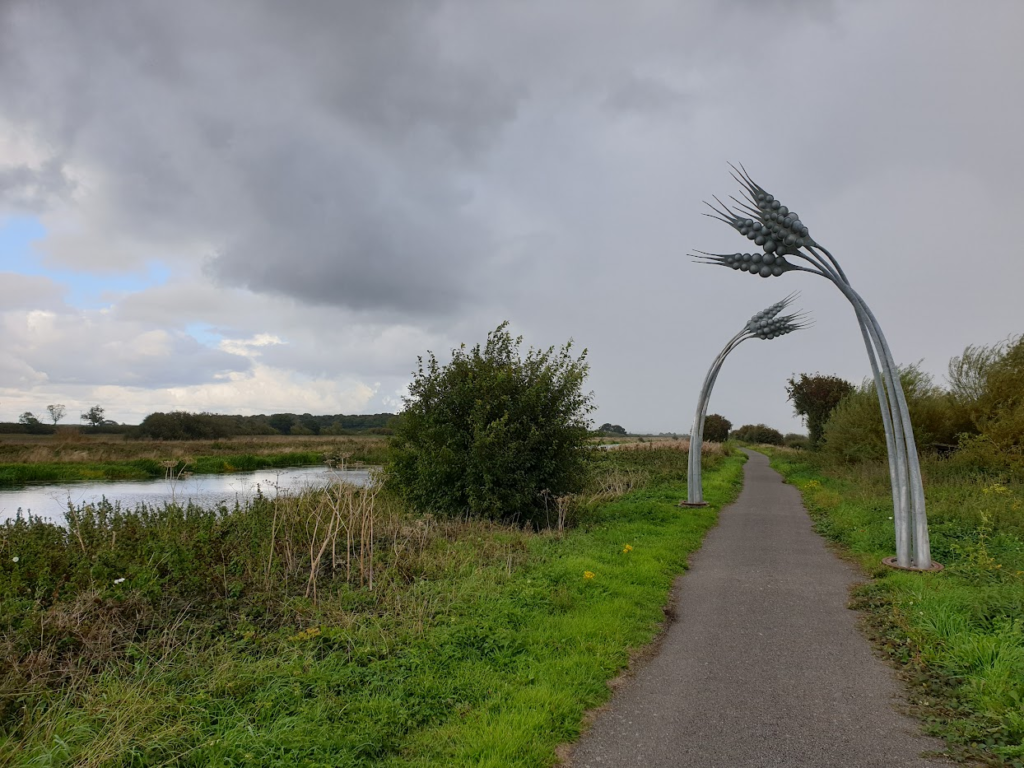
This final section of the day’s ride was through the fens. This is many people’s idea of Lincolnshire: flat as a pancake with long straight roads following alongside drainage ditches. It isn’t terribly photogenic and I didn’t want to stop. So I kept riding east in the knowledge that my route was nothing if not direct. I was re-enacting a ride I did as a teenager with my friend Simon, having camped in Woodhall Spa the night after we left home. We were carrying all manner of extra weight with us on our bikes: a tent, poles, sleeping bags, water carrier and even a washing up bowl, as I recall. But we got all the way to Skeggy, as it is fondly known, and all the way home again. I remember the place names and the long, straight, seemingly endless roads, with flat fields stretching away in every direction. It all still looks the same.
I knew I would not have very much time in Skegness. I know from previous visits that – apart from its excellent sandy beach – I wasn’t missing out on much that would otherwise detain me. So I satisfied myself with a ride down the main street and a picture of the trademark clock tower, where the shops end and the beachfront entertainment begins. I even had time – just – to buy myself fish and chips for the journey home. Then it was back up the street to the station and away. A job well done.

…
